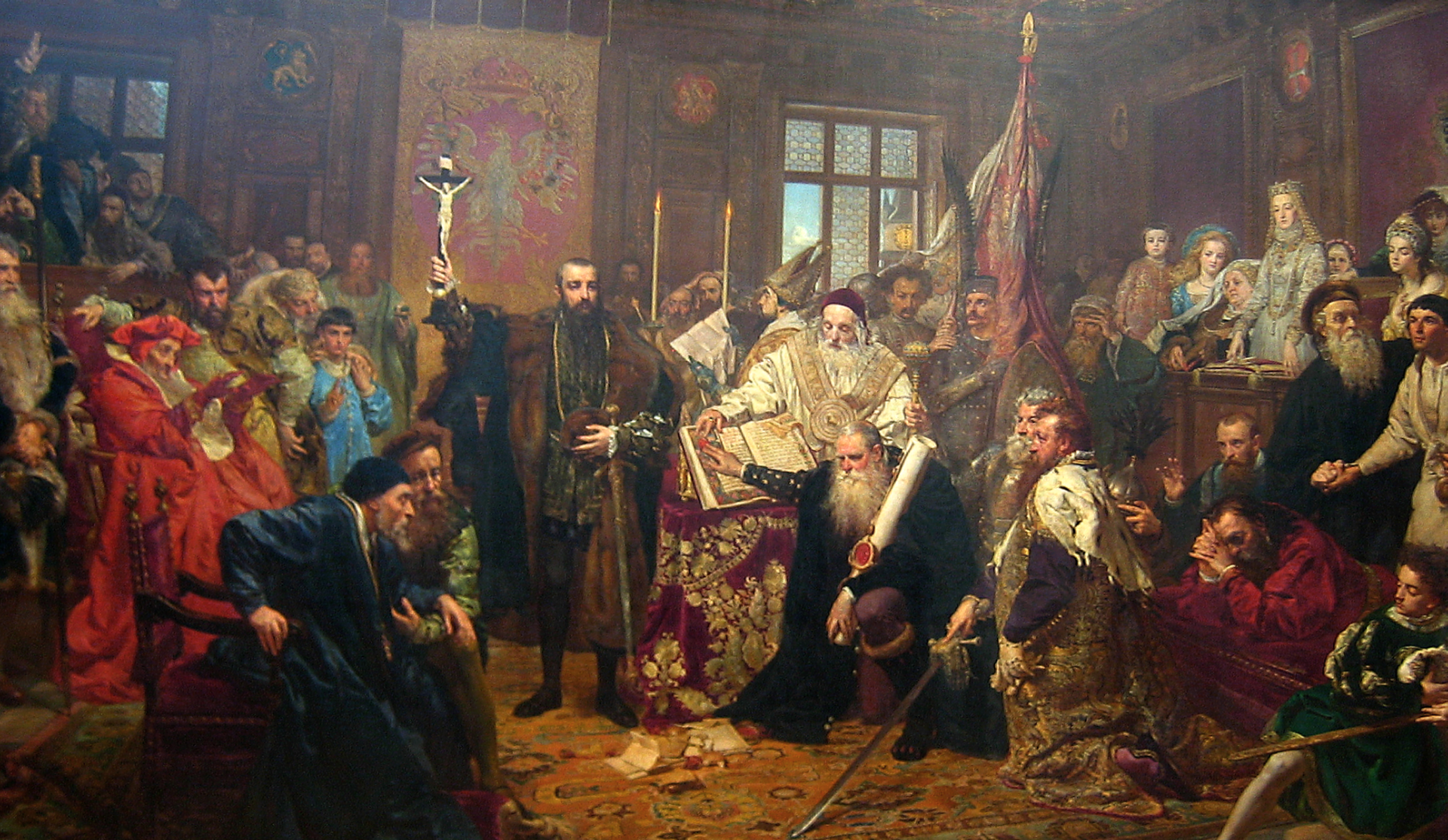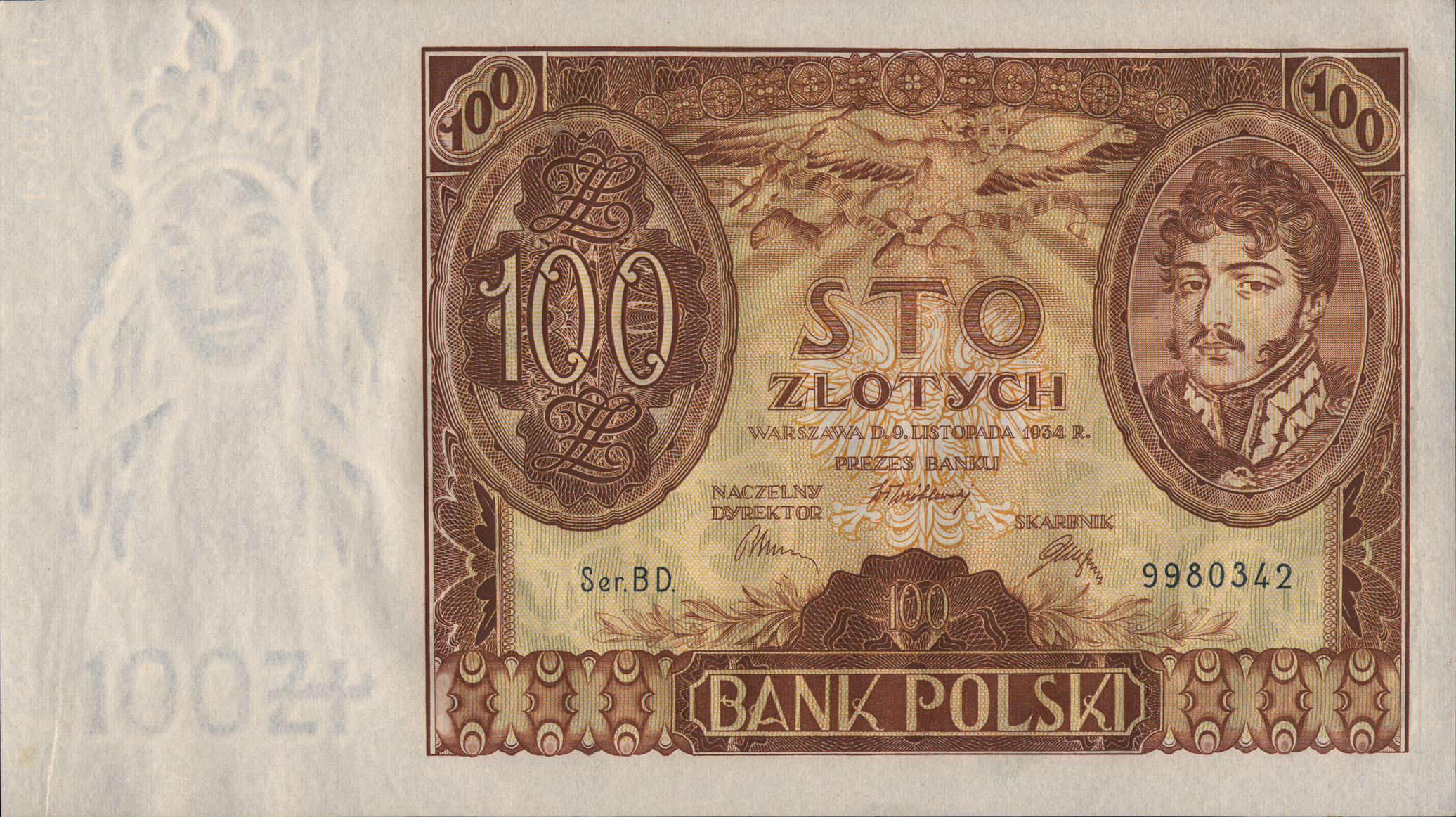The Union of Lublin created a Republic, formed by two states and two nations. The creation of one political community was a radical step. Nothing like it existed in contemporary European political thought.
polishhistory: The Union of Lublin, was signed more than 450 years ago, on 1 July 1569. Is it worth celebrating?
Robert I. Frost: I would say that we should be celebrating what is a quite remarkable document, not only with regard to the history of the lands of the former Polish-Lithuanian Commonwealth, but for European history generally. The documents of the Polish-Lithuanian union, particularly the Union of Horodło (1413) and the Union of Lublin, reflect a completely new approach to the relationship of individual states within a political union. This philosophy of union developed as the Kingdom of Poland and the Grand Duchy of Lithuania discussed the union—often disagreeing about its nature—from 1386, when Władysław Jagiełło became the King of Poland, down to 1569, when the Union of Lublin was signed.

Why is this philosophy so remarkable?
I would point at the fact that the union was not what the textbooks tell us it was. Especially British textbooks state that the Polish-Lithuanian Union was exactly like the British union. It began with the loose dynastic union, in which two parts of the union were only joined by the person of the monarch. What is more, if you read some of the specialist literature on the Polish-Lithuanian Union, you would read that the union kept being broken, when for example Casimir the Jagiellon was elected Grand Duke of Lithuania by the Lithuanians in 1440. Many historians say that the union remained broken until he was elected the King of Poland in 1447.
And it was not?
I would argue that it was not. Certainly neither Poles nor Lithuanians thought it was broken. The reason for that was that the union rested on far more than just a person of the monarch. Let’s take a look at the Krewo Act from 1385. It was the first document of union which was not an act of union, however, but rather a document that Americans today would call a prenuptial agreement. It says that if Jogaila, the Grand Duke of Lithuania, baptizes himself and his brothers, and his pagan people, and if he gets elected King of Poland, he will then join the Lithuanian and Ruthenian territories to the Corona Regni Poloniae (the Crown of the Polish Kingdom). The Corona Regni was different from Regnum (the Kingdom). The latter is what we today would call a state, but the concept of the state was as yet undeveloped. The Corona Regni embodied what in English was known as the community of the realm.
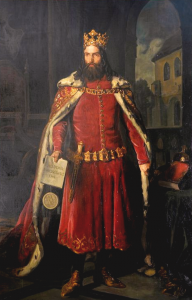
So in what way the concept of Corona Regni Poloniae was unique?
It was not unique to Poland, but in the context of the union was applied in a new way. It suggested that the kingdom was more than just a possession of the monarch or the dynasty. It meant that it was no longer a patrimonial Kingdom and the King was not entitled to do anything he wanted with the territory of the kingdom, without the consent of its people—or at least without the consent of its political elites. The concept appears in the story of Casimir the Great, who died in 1370 and in his last testament tried to bequeath part of the Kingdom of Poland to his favorite nephew Kaźko of Słupsk. The lords of the realm, however, opposed this idea. They showed that the territory of the Kingdom could not be alienated without the agreement of the community of realm (Communitas Regni). And in this case the community of the realm won the battle: the territories that Casimir the Great wanted to give away were not given away.
Then came Louis d’Anjou, who ruled the Kingdom of Poland from 1370 to 1382. When he died it was his daughter Maria who was to become the Queen of Poland, but in the end she did not.
At Koszyce in 1374, Louis, who had two daughters but no sons, promised significant privileges to the Polish nobility (szlachta) if they agree to accept one of them after his death as Queen regnant, that is a queen who rules and is not just a wife of the king. One of his two daughters were supposed to be the Queen. Louis wished Maria to become queen of Poland, and Jadwiga to be Queen of Hungary, but the document, however, did not specify which one. When Louis died, it was again the community of the realm which played the decisive role by rejecting Maria in favour of Jadwiga. And they prevailed. Louis’ wishes were not respected and the community of realm effectively turned Poland into an elective monarchy.
And then came Jogaila, who was chosen by the community of realm to be the future spouse of Jadwiga. The prenuptial agreement was signed in which Jogaila promises “to join (applicare) his Lithuanian and Ruthenian lands to the Kingdom of Poland”. What did this mean?
Historians have for generations argued over what applicare signified. For many historians it meant straight incorporation: that the Grand Duchy of Lithuania was to be incorporated into the Kingdom of Poland. This is not specified in the Krewo Act, however. Henryk Łowmiański, the great historian from Poznań, claimed that there must have been a separate act of incorporation which has been lost. But I do not think there was any separate act. Thanks to the findings of professor Wacław Uruszczak from Cracow we know now what applicare actually meant. The men who drafted the Krewo Act were all canon lawyers. There was no concept of union in Roman law, Polish law, Ruthenian law or German law. But there was a concept of union that existed in canon law, the law of the church. In canon law, applicare meant that the two parts were united on the basis of, what they call in Latin aeque principaliter, i.e. that both parts were equal in status.
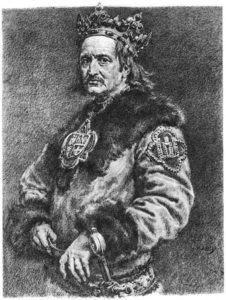
The Polish lords, the community of realm, hoped to civilize pagan Lithuanians and by doing so, constitute the stronger part of the newly created union. But Jogaila as the King Władysław Jagiełło turned out to be a very talented politician. He chose his cousin Vytautas (Witold) to be the Grand Duke in Vilnius…
Again, the relationship between the king, Władysław Jagiełło, and the Grand Duke, Vytautas, which was difficult at first, was eventually settled on the basis of canon law concepts. King Władysław retained for himself the title of the Supreme Duke (Dux Supremus), and the position of Vytautas was comparable to that of a bishop in canon law, who enjoyed considerable power and authority in his diocese, but he did not have full power (plenitudo potestatis), because that belonged only to the Pope.
The very fact that Lithuanians chose Catholicism over Orthodox Christianity had significant consequences.
If the Lithuanians had not chosen Catholicism, it is entirely possible that a separate Lithuanian identity would have disappeared completely. The dynasty of Gediminas expanded to take control over many lands of the former Kievan Rus’, which means that a small pagan dynasty claimed authority over a much larger number of Orthodox Ruthenians. It could be done only by allowing Ruthenians to continue to enjoy a considerable degree of self-government, according to their own laws and their own customs. What is more, the sons of Gediminas were granted Ruthenian duchies, married Ruthenian princesses, and became Orthodox themselves. Thus the whole dynasty was opened up to significant Ruthenian influence. Jogaila’s choice of Catholicism was a means of preserving a separate Lithuanian identity, and preventing Lithuanian culture being absorbed by Ruthenian Orthodoxy.
Let’s come back to Vytautas. He had some ambitions to become a more autonomous or even independent ruler, didn’t he?
Well, that is the traditional picture, but it is difficult to sustain this view in the light of the 1413 Union of Horodło. This document is important, because it is as much Vytautas’s as Jagiełło’s creation. It does not embody any desire on the part of Vytautas for the establishment of Lithuania as a sovereign state; such an interpretation is anachronistic. It was signed in Horodło, which was Vytautas’s castle, so he was the host. Far from asserting Lithuanian independence, is first clause asserts that Lithuania had been incorporated; moreover, to get the point across, it stated that Lithuania was again being incorporated.
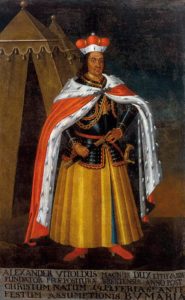
But what did incorporation mean this time?
That is the 50,000 dollar question. Basically, in the late medieval law there were two senses of ‘incorporation’. There was a full incorporation (incorporatio plena) that usually happened when one political entity was conquered by another. In such a situation, the conquered party lost its rights, freedoms and liberties and became a part of the realm of the conqueror. But there was another kind of incorporation: incorporation less than full (incorporatio minus plena). And that gave a range of possibilities for incorporating an entity, but allowing it to keep part or all of its own laws and customs. Needless to say, the latter was much more attractive. In the Union of Horodło the concept of Regnum is again present, which allowed the Polish-Lithuanian entity to act as a one state on the international scene. That element is especially important, because of the complicated and hostile relations with the Teutonic Order. But looking closely at the text of the Horodło Union, we find another meaning: this union is not a union of monarchs but a union of peoples. Jan Długosz openly writes about “a brotherly union between peoples”.
Was it thanks to the Union of Horoło, that the concept of elective monarchy was adopted in the Grand Duchy of Lithuania?
It allowed the Lithuanians to elect their Grand Duke when Vytautas died, that was very important. In hereditary terms, the title of the Supreme Duke would pass to Jagiełło and his direct male heirs, but the Lithuanians were allowed to elect the man who would actually govern them, a successor to Vytautas. It was a very significant achievement, together with another remarkable feature of the document, the famous Horodło adoption, in which 47 Lithuanian noble families are adopted into Polish noble heraldic clans.
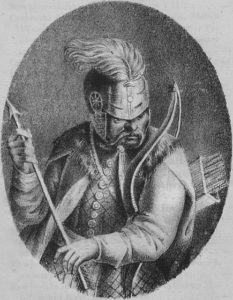
But the adoption of Horodło did not work very well, did it?
Vytautas was keen to establish that the union was one based on equality between the two partners; he therefore realised the importance of creating a Lithuanian community of the realm that could stand alongside its Polish equivalent. The adoption was his way of achieving this aim: by having Polish clans adopt the 47 Lithuanian families—which he selected personally—in an act that explicitly recognised that the Lithuanians were equal to the Poles.
Thus in 1430, after Vytautas died, a debate began about who was to become Grand Duke of Lithuania.
The situation was complex. In Poland the question was whether the two sons that Jagiełło had unexpectedly fathered in his mid-seventies, possessed any hereditary rights to the Polish throne. When Vytautas died however, they were both still minors, and neither Jagiełło nor the Polish community of realm trusted Jagiełło’s only surviving brother, Švitrigaila, whom they saw as mentally unstable and unfit to rule. So it was decided that Jagiełło would rule Lithuania from Cracow, as he had done in the years immediately after his election to the Polish throne. The Lithuanians protested, however, that the Poles had not consulted them, as they were required to under the terms of the Horodło union, and decided to elect Švitrigaila as their Grand Duke.
Does it mean that the union was broken?
No. The Lithuanians were well aware that it was Horodło that had given them their political rights. This was the moment when it became perfectly clear, that the Lithuanian community of realm had come into being and was prepared to assert its rights under the union, not in opposition to it. The emergence of this Lithuanian community of the realm was confirmed in 1440 when Władysław III, Jagiełło’s eldest son, was elected King of Poland and, shortly afterwards, was elected King of Hungary. He decided to send his younger brother Casimir the Jagiellon to Vilnius as governor (gubernator). But the Lithuanian community of realm refused to accept the decision, stressing that, according to Horodło, firstly, they had the right to be consulted, and secondly, that they had the right to elect a Grand Duke. When the Polish delegation to Vilnius refused to negotiate, they unilaterally elected Casimir as their Grand Duke, despite the protests of the Poles.
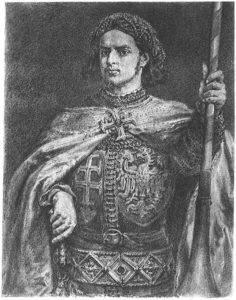
The situation became even more complicated after Władysław III was killed at the battle of Warna in 1444.
The Poles now had no king, and they invited Casimir to put himself forward for election to the Polish throne. But he was reluctant to do so, patiently waiting for terms he could accept. It took three long years for the Polish lords to understand that they had little alternative but to accept his conditions. Finally, in 1447, he accepted his election and moved to Cracow, as Grand Duke, and King of Poland. He could govern Lithuania from Cracow because the Lithuanian community of realm had matured and proved itself. The great Lithuanian lords were happy enough, as in effect they controlled the government. They did so, however, within the union which, despite the long interregnum in Poland, had never been broken.
Casimir the Jagiellon ruled for a long time until 1492, having four sons. After his death Jan Olbracht became the King of Poland and Alexander became the Grand Duke of Lithuania. After the former died, the latter took over in Cracow. During his reign there was an attempt to remodel the union.
The abortive Union of Mielnik was problematic, because the Polish council sought to mould a system in which they would dominate the government of the union. Alexander clearly did not want that. And although the Union of Mielnik was agreed, it was never ratified by the Lithuanians and it did not come into effect. In this document, however, we will find a very important notion of the body politic (ciało polityczne), to denote the united entity of Poles and Lithuanians.
The two nations needed each other. Lithuania was seriously threatened by Muscovite expansion.
Indeed, between 1492 and 1535 Grand Duchy of Moscow seized a third of Lithuanian territory; the Lithuanians needed considerable support from the Poles, both military and financial, to resist. More importantly, the Lithuanians had derived a great deal from the union. On account of the union, it was now clear that the Grand Duchy of Lithuania was no longer a patrimonial monarchy. Lithuanian nobles had the right under the law to pass on their allodial land to the children without needing to obtain permission from their ruler. The pressure from Moscow relaxed in the 1530s, but started to rise again in the 1550s. Tsar Ivan the Terrible claimed to be the ruler of the lands of all Ruś which means also the Ruthenian territories that were a part of Lithuania. Similar danger came also from the South, from the Turks and Crimean Tatars.
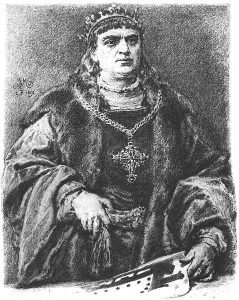
What about the internal tensions in the Grand Duchy?
Orthodox Ruthenian nobles had been granted full legal equality in the 1430s, but not full political rights: according to the Union of Horodło, only Catholics had the right to hold the highest offices, which caused significant discontent among Orthodox nobles. The great general Konstanty Ostrogski, who won the battle of Orsza in 1514, was honoured by King Sigismund the Old, who appointed him wojewoda of Troki. The Catholic Lithuanian lords, led by Wojciech Gasztold, immediately protested, appealing to the terms of Horodło. Sigismund August granted Orthodox nobles full political rights in 1563, but the question remained as to whether they were in practice second class citizens.
The situation in the 1550s was of that nature, that another crisis in the Polish-Lithuanian state seemed unavoidable.
Sigismund August, the only son of Sigismund the Old, had to face all sorts of challenges. He was not happily married, he suffered from a mysterious disease, the war with Muscovy had resumed and he faced a powerful movement in the sejm calling for the execution of the laws. The execution movement was pressing for Sigismund August to reclaim all royal estates illegally alienated since the passing of a statute in 1504 outlawing the practice, but also the execution of the incorporationist Polish interpretation of the union with Lithuania: the union has been passed into law; all we have to do is execute that law. Since the Lithuanians required Polish financial and military assistance to resist Muscovite aggression, once Sigismund August declared his public support for the execution movement in the early 1560s, and for closer union, it was difficult for the great lords who dominated Lithuanian politics to resist, especially since they faced pressure from the ordinary Lithuanian nobility, tired of their dominance, for closer union.
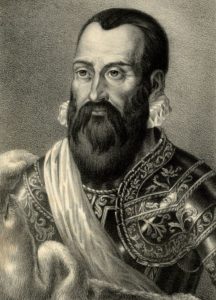
The two sides clashed at the Lublin sejm. Did the Lithuanians want independent statehood?
By no means; to think in such terms is anachronistic. The argument was not about whether or not there should be a union, but over the nature of that union. The Lithuanian council lords wanted the union to be a proper union, as they had understood it from the start, a union of equals to equals, and were fundamentally opposed to closer union. Mikołaj Radzwiłł the Black, by now a Calvinist, and an able politician, defended Lithuania in elegant Polish. He mounted a remarkable defence singlehandedly, challenging the Poles to show him the documents of union to which they kept appealing. He pointed out that there were differences between the Polish and Lithuanian versions of the official texts of the acts of union. Nevertheless, he adroitly presented himself as both a Lithuanian and, at the same time, a member of one political community together with the Poles. He appealed to the concept of res publica, a term that already appeared in the Union of Horodło. “You defend your Republic”, he said, “do not take it amiss, when I defend our Lithuanian Republic”.
What did he mean, when using the word ‘Republic’?
The Polish and Lithuanian elites that were forming a new concept of union were educated in the universities of north Italy and Germany. They had imbibed the language of Renaissance republicanism, which saw the Republic, as Aristotle had conceived it, as a community of citizens (wspólnota obywatelska). And this was the vision that helped to break the deadlock during the Lublin Sejm in 1569. Not, however, before some bitter arguments, in which the Lithuanians resisted the suggestion advanced by Walenty Dembiński at the Warsaw sejm, that Lithuania should simply be content to be a province of Poland like Wielkopolska and Małopolska, and that the Grand Duchy be renamed ‘New Poland’.
It was an insult for Lithuanians.
It certainly was. It suggested that the Poles did not want to interpret the union as a relationship of equals. By 1569, however, Radziwiłł the Black was dead, and the Lithuanian delegation to Lublin was led by Mikołaj Radziwiłł the Red, who, in contrast to his cousin Radziwiłł the Black, was a poor politician. Finally, as the Lithuanians came under increasing pressure from Sigismund August to agree to the terms of a new union, they decided to walk out.
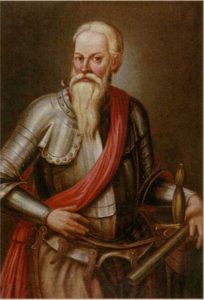
And that was a big mistake.
Right after Lithuanians left the Sejm, the King invited the nobility of Podlasie, Bracław and Volynhia, whether they want to be a part of the Kingdom of Poland. In many textbooks one can read that the territories of today’s Ukraine were annexed to Poland which was not the case. Separate treaties were agreed with every voivodship and each of them had a slightly different text. The terms were comparable to the fifteenth-century union with Prussia, which agreed on the basis of an incorporatio minus plena, as I mentioned earlier. This was an attractive solution for many Orthodox Ruthenian nobles, who had grown tired of the domination of Lithuanian politics by a narrow clique of Lithuanian Catholic families: the Gasztold, Chodkiewicz and Radziwiłłs. The pressure from below was significant, and it grew rapidly from 1566 on, when the Second Lithuanian Statute was introduced in the Great Duchy, introducing a new system of republican self-government patterned on the Polish model.
So the Orthodox nobility was in favor of the new union?
Yes, on the whole, after an initial period of hesitation. Sigismund August had played his hand well. In 1563 he granted his hereditary rights to the Lithuanian throne not to his sisters or any other individual, but to Corona Regni Poloniae. At the same time he issued a royal edict granting full political rights to the Orthodox nobility, thereby overturning the provision of the Horodło union that limited certain central offices in Lithuania to Catholics. It shows how rapidly the political situation in the Polish-Lithuanian state was changing in the 1560s. That was a very important step that prepared the way for the Union of Lublin.

From that perspective the Union of Lublin must have been understood differently in Kiev and in Vilnius.
For Orthodox nobles it meant the reunification of the southern Ruthenian lands. As soon as Lithuanians understood what was happening in Lublin, they immediately returned. With all that pressure, orchestrated by Sigismund August, they finally agreed to the terms of union.
So what did they get? It looks like they were brutally forced to agree with the terms they did not like.
That is the most paradoxical of all the outcomes of the Union of Lublin. In 1569, the Lithuanian interpretation of the union won. The actual treaty of union says that “the Kingdom of Poland and the Grand Duchy of Lithuania already form one body, one common Rzeczpospolita”. Thus it established one Republic, formed of two states and two nations. This was the idea that broke the deadlock. It finally granted the Lithuanians the equality that they had always claimed. The union was now in law one of equals to equals. The creation of this one political community that comprised two separate states was a radical step. Nothing like this concept existed in contemporary European political thought. The treaty was written in Polish, the official legal language of Poland since the 1530s. It was important, because the Latin of 16th century had no word for ‘state’ in the modern sense. Yet the text of Lublin contains the Polish terms państwo (state) and naród (nation) in their modern sense. According to the text of the Union of Lublin, the Polish and Lithuanian nations formed one lud, by which was meant not the lud in today’s understanding, but was the Polish translation of the Latin term populus, which denoted the citizen community.
The political system established by the Union of Lublin is criticized by many historians. Was it really so modern and efficient as you describe it?
I did not say it was modern. I do not think we should judge the Polish-Lithuanian Commonwealth that was formed in 1569 for failing to be what it never tried to be. Many historians have indeed criticized the union since Michał Bobrzyński, the influential historian from the late nineteenth-century Cracow School blamed it for the anarchy that, so he claimed, led to the partitions of Poland. He argued that having two states in one state was a pure nonsense. Yet Bobrzyński missed the point. Lithuanians and Poles sought in 1569 to create a political community, not a state. And they succeeded. After 1569 there were no more discussions over the nature of the union. That question had been settled for good. The question of the functioning of that republic was a different affair entirely, which I will discuss in volume two.
Interviewer: Michał Przeperski

